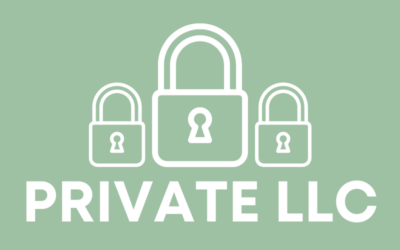If you’ve been thinking about launching a company this year but haven’t taken the necessary steps to start a business, don’t put it off any longer. Time is of the essence! To help you in your efforts, I’ll share some of the most important to-dos to put on your startup checklist before 2018 slips away.
1. Write a Business Plan
The first step in any successful business endeavor is to start out with a plan and that includes doing market research, identifying your target market and competition, and more. Writing a business plan forces you to think through all the elements of your business and will bring any potential problems to light. Plus, if you’re looking for startup financing, investors and banks will expect to see your business plan. The key parts of a business plan include:
- Executive Summary. Your company description should be concise, but descriptive enough so investors will get a good understanding of your business and why you’ll be a standout in your industry.
- Market Analysis. This section should include detailed market statistics and research. Explain each of your sales strategies and where you expect to find your best prospects.
- Financial Projections. Be sure to go over this section with an accountant to forecast sales and expenditures for the next 12-month period and also the next three to five years.
- Your Team. You may not be starting your business with employees, but you’ll want to list anyone involved in your startup such as advisors, support and your experience in your industry.
- Service or products. Thoroughly describe your product or service and any related research and future expansion plans.
2. Name Your Business
Not to scare you, but the name you choose for your business can make the difference between success and failure. Do your own internet search on potential business names and you’ll see what I mean. Your name can’t be too general or too narrow. It should be memorable, descriptive and project the brand image you desire. This is a challenging task, but not impossible. Start by brainstorming words and ideas that describe your business’s core mission and values. Look at trends in business names and balance those ideas with what the right tone, whether you want professional, hip, educational or something else.
Before you get too attached to any name, it’s important to make sure the name isn’t already taken by another business. Do a thorough business name search and don’t be intimidated by names close to what you like for your own business. Even if you find a website with your chosen name, you may be able to use a different website extension such as .biz or food. Most importantly, make sure you secure the rights to your name through the United States Patent and Trademark Office (USPTO). A trademark protects your brand name, your logo, and your business’s slogan.
3. Determine Your Startup Costs
I can’t emphasize enough how critical this step is to start your business on the right foot! You have to be realistic when it comes to money. Chances are it will be months before your small business actually earns a profit, so it’s essential you have enough working capital to cover your startup costs. Immediate costs include fees for state and federal filings, licenses and permits, marketing, professional fees, and website development. Depending on your industry, you may also immediately need to purchase inventory and equipment.
And don’t forget, you’ll also need money to cover your normal living expenses: rent/mortgage, utilities, car payment, etc.
Be sure and keep detailed records of your startup expenses, as the IRS allows you to deduct up to $5,000 in start-up costs in your first year in business. The IRS definition of startup costs includes the “amount paid or incurred for creating an active trade or business or investigating the creation or acquisition of an active trade or business.”
4. Choose a Business Structure
Your business structure determines what method of taxation your company is subject to, your personal liability and your business’s compliance requirements. The most common forms of business are sole proprietorship, partnership, corporation, S corporation, and limited liability corporation (LLC).
Because it is the easiest business structure to form, sole proprietorships are the most common form of business organization in the U.S. But they also expose your personal assets to the most liabilities—there is no division between your personal life and your business, so you are personally liable in the case of a lawsuit. The tax rate is based on your personal tax bracket and most owners of sole proprietorships file quarterly estimated taxes. Partnerships are similar to sole proprietorships as the liabilities and the financial responsibilities fall to the owners. Plus, the same pass-through taxation applies to partnerships.
Alternately, C Corporations are considered a separate entity from the owners and shareholders and personal assets are not liable to the actions of the corporation. The new tax laws make corporations even more desirable, by taxing at a flat rate of 21 percent, instead of varying due to income. S corps are a bit like sole proprietorships and corporations in that profits and losses are passed through to owners and shareholders, but personal assets are separate from the business assets and protected.
The popular LLC structure is similar to corporations, but has less formal requirements so the costs and paperwork are not as cumbersome.
5. Do Your Paperwork
Whatever structure you choose for your business, you’ll definitely need to take the step to start on all the paperwork requirements business owners need to do to establish a business. Start by contacting the IRS to get a tax ID number because you’ll need that number before you go forward with anything else. Most small businesses can register a business by simply contacting the Secretary of State office in the state the business is located. Next, you’ll need to contact your city or county business development office to get a business license and any other operational permits you need. To be sure you’re in compliance (and not forgetting something important), check out CorpNet’s Start a Business page for all you need to know to start your business today.
If you get cracking on following these steps to start a business, you can be well on your way to being a business owner before New Year’s.





